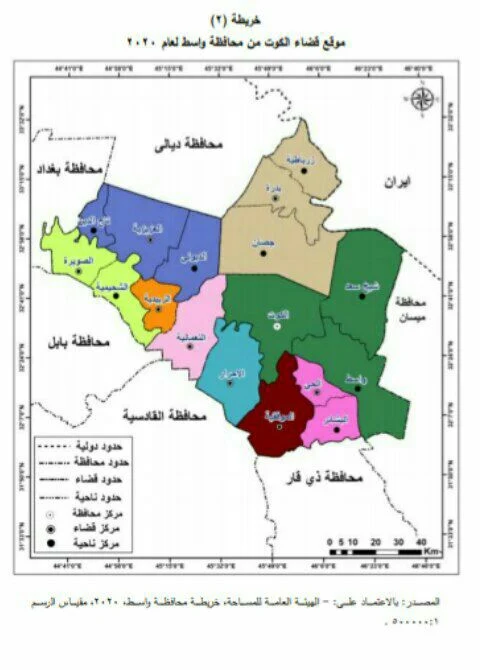التحليل المكاني لموسم الزواج في قضاء الكوت..ختام علي عسكر - رسالة ماجستيرpdf
Abstract:
The study Dealt with the spatial analysis of the marriage season in Kut
district, as marriage is one of the human phenomena with demographic and social
effects on the population. It has attracted the attention of many specialists,
such as Geographers and Demographics. The season of marriage refers to the
season during which (marriages) are organized, and it differs according to
different societies in terms of their social, economic and cultural systems.
The traditions and customs of those societies are noted in the marriage. There
are seasons in which marriages increase, such as feasts, religious occasions,
and various holidays. While we find other seasons in which there are fewer
marriages, as in the season of sorrows, as well as in the holy month of
Ramadan.
The
study aims to reveal the Discrepancy in marriage cases and the season of
marriage in Kut district and at the level of its administrative units. The
study relied on the cases registered in the personal status courts for the
years (2010 and 2020) as well as the field study for the year 2020. The study
focused on the geographical distribution of married males to the units The
administrative unit and its spatial difference and knowing the reasons for that
difference between those units. the largest share was of the Kut district
center with a percentage of (87%) because it is the administrative unit that is
characterized by a larger population size and the concentration of economic
investments and various activities.
The study also focused on the demographic characteristics of married
males, and considered them as factors that determine a specific season of
marriage, in addition to social and economic factors that are also among the
reasons leading to marriage in a particular season of the year (month, season,
day).
The study was based on a random sample
distributed to married males in the Kut district, and it was a total of (383)
questionnaires that included multiple aspects and included three units: (Kut
district center, Wasit district and Sheikh Saad district).
The
study adopted the functional-analytical approach and the employment of
quantitative and statistical methods based on observation and observation in
the study area and field data, as well as the use of tables, maps, and graphs
to facilitate comparison and draw conclusions, The statistical analysis of the
variables affecting the marriage season, especially correlation and regression,
was adopted.
The study reached a number of results, most notably the increase in
marriages in the months free of sadness and doom, represented by the first and
second spring months, as well as the marriages in the hot months represented in
the second half of the year, and their decrease in the winter months when
compared to the summer months.
The
study also found a decrease in the number of marriages in the virtuous months,
such as the blessed month of Ramadan, Muharram and Safar, This was confirmed by
the quantitative analysis of the variables affecting the marriage season in the
district of Kut.
The study also adopted quantitative
methods to clarify the spatial relationships of the factors affecting the
marriage season and the demographic characteristics of married couples.










0 تعليقات
شكرا لتعليقك .. سيتم الرد عليكم في اقرب وقت ممكن .
كوكب المنى